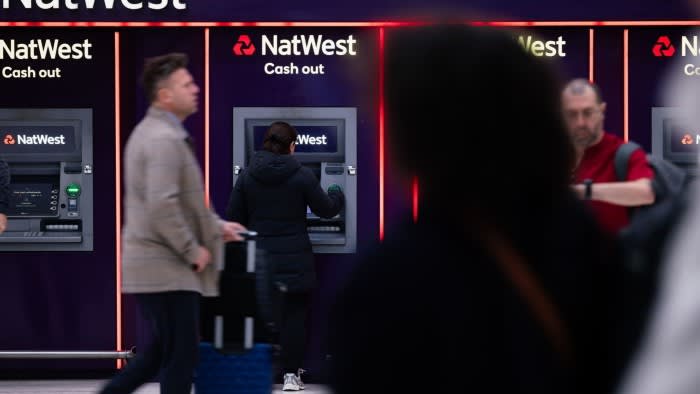Unlock the Editor’s Digest for free
Roula Khalaf, Editor of the FT, selects her favourite stories in this weekly newsletter.
The tide has turned for UK banks. Having lagged their southern European rivals as interest rates rose, their shares are now surging ahead.
NatWest, whose shares have doubled over the past 12 months, leads the pack, with Barclays close behind. Even Lloyds, which has lost nearly a tenth of its value since a negative motor finance ruling on Friday, is trading roughly in line with the Euro Stoxx banks index.
They deserve their place in the sun. Third-quarter results last week underscored their low sensitivity to interest rates. That’s a tailwind in a declining rate environment. Net interest income rose across the board compared to the second quarter of the year, by 2 per cent at Lloyds, 4 per cent at Barclays group — which includes its non-UK businesses — and 5.2 per cent at NatWest, despite a first trim to UK interest rates in August.
In part, that’s a function of UK banks’ business mix, with fewer floating rate mortgages and higher-yielding deposits. A key factor is they make far greater use of structural hedges — instruments that swap interest rate risk for a fixed margin — than European peers.
All of this may have held back UK banks’ growth as rates were rising, but it will be a big cushion on the way down. Indeed, in a declining rate scenario UK banks — alongside those in the core European regions of France, Benelux and Germany — are set to outperform those in the periphery and the Nordics, according to Mediobanca research.
There’s another reason to take a closer look at UK banks. A more cheerful economic outlook means that customers are now starting to re-leverage. That showed through at NatWest, with loans to customers growing 2.3 per cent over the first nine months, and at Lloyds, which saw a pick-up in credit card use and mortgages.
There are signs that loan growth could accelerate further: mortgage applications are up 55 per cent year-on-year according to Aman Rakkar at Barclays. And in a more favourable environment the bigger banks — with better margins — have the potential to take market share.
All this suggests that returns on tangible equity are set to remain high, with Lloyds and NatWest targeting figures in the low- to mid-teens in 2026. Despite their outperformance compared to the European banking sector, both banks are still trading at around tangible book value, or 7-8 times 2025 earnings. That should enable them to hog the light for a while longer.
camilla.palladino@ft.com
https://www.ft.com/content/3f877f18-6a6b-4720-b624-7d4efaf0fc1a


